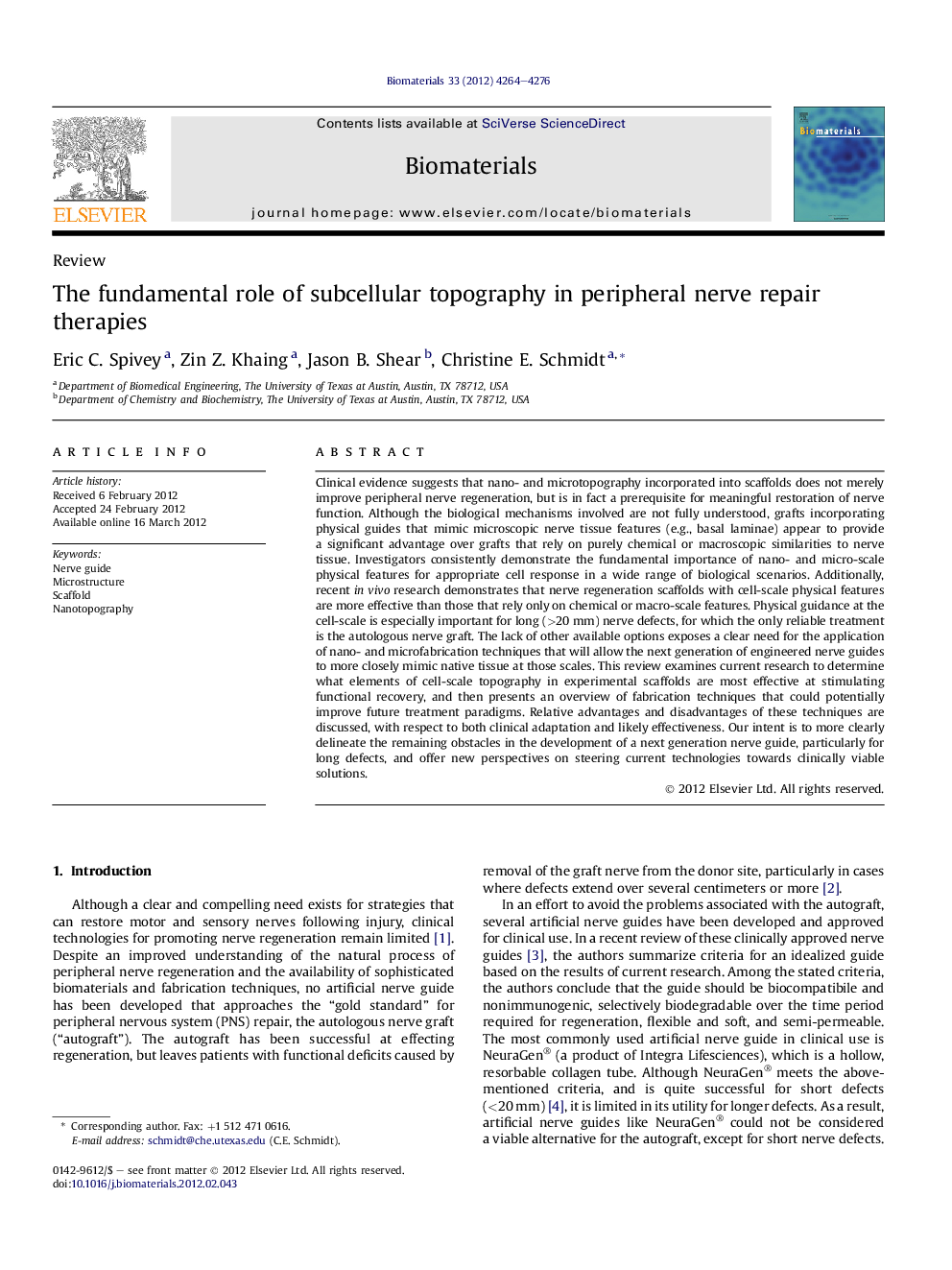| کد مقاله | کد نشریه | سال انتشار | مقاله انگلیسی | نسخه تمام متن |
|---|---|---|---|---|
| 10229231 | 515 | 2012 | 13 صفحه PDF | دانلود رایگان |
عنوان انگلیسی مقاله ISI
The fundamental role of subcellular topography in peripheral nerve repair therapies
دانلود مقاله + سفارش ترجمه
دانلود مقاله ISI انگلیسی
رایگان برای ایرانیان
کلمات کلیدی
موضوعات مرتبط
مهندسی و علوم پایه
مهندسی شیمی
بیو مهندسی (مهندسی زیستی)
پیش نمایش صفحه اول مقاله

چکیده انگلیسی
Clinical evidence suggests that nano- and microtopography incorporated into scaffolds does not merely improve peripheral nerve regeneration, but is in fact a prerequisite for meaningful restoration of nerve function. Although the biological mechanisms involved are not fully understood, grafts incorporating physical guides that mimic microscopic nerve tissue features (e.g., basal laminae) appear to provide a significant advantage over grafts that rely on purely chemical or macroscopic similarities to nerve tissue. Investigators consistently demonstrate the fundamental importance of nano- and micro-scale physical features for appropriate cell response in a wide range of biological scenarios. Additionally, recent in vivo research demonstrates that nerve regeneration scaffolds with cell-scale physical features are more effective than those that rely only on chemical or macro-scale features. Physical guidance at the cell-scale is especially important for long (>20 mm) nerve defects, for which the only reliable treatment is the autologous nerve graft. The lack of other available options exposes a clear need for the application of nano- and microfabrication techniques that will allow the next generation of engineered nerve guides to more closely mimic native tissue at those scales. This review examines current research to determine what elements of cell-scale topography in experimental scaffolds are most effective at stimulating functional recovery, and then presents an overview of fabrication techniques that could potentially improve future treatment paradigms. Relative advantages and disadvantages of these techniques are discussed, with respect to both clinical adaptation and likely effectiveness. Our intent is to more clearly delineate the remaining obstacles in the development of a next generation nerve guide, particularly for long defects, and offer new perspectives on steering current technologies towards clinically viable solutions.
ناشر
Database: Elsevier - ScienceDirect (ساینس دایرکت)
Journal: Biomaterials - Volume 33, Issue 17, June 2012, Pages 4264-4276
Journal: Biomaterials - Volume 33, Issue 17, June 2012, Pages 4264-4276
نویسندگان
Eric C. Spivey, Zin Z. Khaing, Jason B. Shear, Christine E. Schmidt,